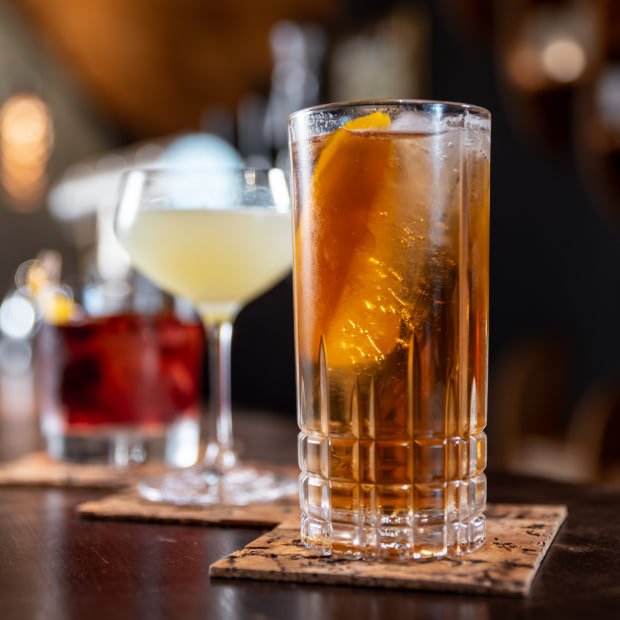Allspice is an important ingredient in barbecue and curry. But it can be had for free in your own kitchen cabinet.
It’s a spice like no other. It tastes like cinnamon, pepper, cloves and nutmeg, all at once. The flavor is so distinctive that you need only a tiny amount to make a dish taste like allspice. It was worth its weight in silver for this reason alone—but it was also said to heal ailments and promote longevity. Christopher Columbus brought it back to Spain from his first voyage, which helped make him rich. But after about 1600, the British began to colonize Jamaica, where allspice grew, and soon forbade the export of the spice to Spain. If you wanted allspice, you had to go through England.
What happened next illustrates how globalization can be an engine of imperialism. The British turned allspice into a commodity with wide appeal, by introducing it as “Jamaica pepper.” The demand for allspice soared as Jamaican planters became internationally famous for their spice plantations; this made the planters fabulously wealthy, which enabled them to buy slaves; this made slave trading profitable; which led to the triangular trade with New England and Africa; which enriched Britain’s already powerful
Allspice (also known as pimento, Jamaican pepper, or newspice) is a spice obtained from the dried berries of an evergreen bush of the same name. It is native to the Caribbean, Central America and northern South America. Allspice was used by Christopher Columbus when he was exploring Jamaica in 1503.
The allspice plant, also known as Pimenta Dioica, grows to about ten meters tall. Its leaves are similar to bay leaves, but are a little rougher. The berries are picked when green and then dried. They are brown when dry and have a spicy aroma similar to a mix of cloves, cinnamon and nutmeg. The berries are often used whole or ground into a powder. Allspice is used in pickling and other cooking recipes that call for cinnamon or nutmeg but not both.
Allspice is also used to make liquors such as pimento dram and allspice liqueur. It is also used in perfumery and herbal medicine
Allspice comes from the dried berries of a tree in the family Myrtaceae. The genus is Pimenta. There are several species, and in Jamaica, where allspice is most commonly grown, it is called “Jamaica pepper.”
Allspice gets its name because it tastes like a combination of cinnamon, nutmeg and cloves. In fact, it tastes like a combination of about a dozen spices, including some that are not usually found in desserts; but that’s close enough for hors d’oeuvres.
Allspice was Columbus’s favorite spice (he called it “the Indian spice”), and he brought it back to Europe with him in 1493. It has since been an important ingredient in British cooking, especially during the colonial period: allspice was an ingredient in Coca-Cola until 1903. In 1874, the USDA declared it the official spice of the United States.
Allspice is a fruit native to the Caribbean. It has a strong flavor, but it can be combined with other spices quite effectively. In the 16th century, European explorers discovered allspice in the West Indies and brought it back to Europe and North America. Today, allspice is one of the most commercially important spices in the world.
Allspice, also known as Jamaica pepper, is the dried unripe berries of a small evergreen tree. The name allspice comes from the fact that it tastes like a combination of cinnamon, nutmeg and cloves.
Allspice is native to the Caribbean, Central America, northern South America and southern Mexico. It has been used by humans since pre-Columbian times. The Spanish brought it to Europe in 1493 after finding it during Christopher Columbus’ second voyage to the Western Hemisphere.
It is also known as pimenta or pimento. Its flavor can be described as a mixture of cinnamon, nutmeg, and cloves. It is used as both a spice and a herb.
Allspice is not a mixture of spices. It is a single spice, made from the dried peels of two different fruits. The botanical name is “Pimenta dioica”, which is a Latin way of saying “two-faced peppercorn.” That’s a good description.
The two faces are clove, and pepper. They are almost identical: thin, papery cells filled with oils, stacked in an alternating pattern like the floors of an apartment building. The difference between them is in their flavor: clove tastes like cloves, and pepper tastes like pepper. If you grind up the whole fruit, you get an allspice that tastes like both cloves and pepper.
Cloves and peppers are close relatives that evolved from a common ancestor. They’re also distant cousins of ginger and cinnamon, which also evolved from a common ancestor.
Allspice is the dried unripe fruit of a small tree that is native to the West Indies. It was discovered by Europeans in the early 1500s, and quickly became popular as a substitute for pepper, which had to be imported at great expense from the East. In fact, allspice was so much like pepper that it was nicknamed “jamaica pepper,” after Jamaica, where it was first popularized.
“Jamaica pepper” is a good example of what branding does. Jamaican allspice doesn’t taste like black pepper or white pepper; it tastes like itself. The name gave people a new way to think about how it tastes. But allspice is not really a substitute for either black or white pepper; if it were, it would probably be called “pepper.” The name makes us think that allspice tastes more like black pepper than white, when in fact they are very different in flavor.
